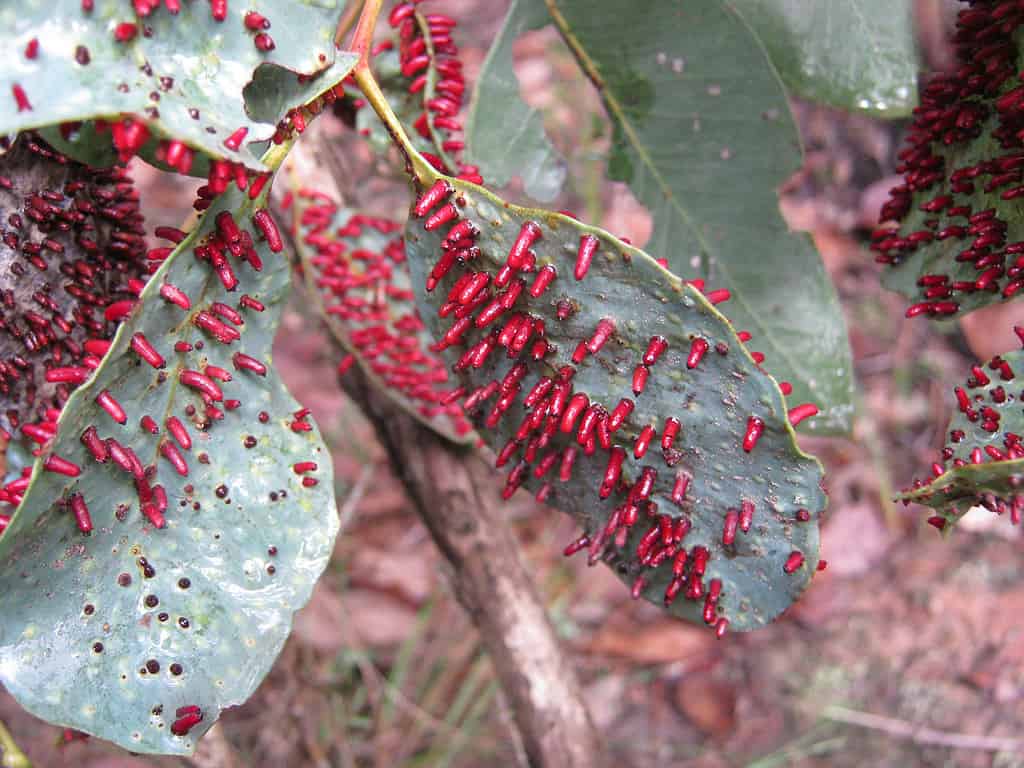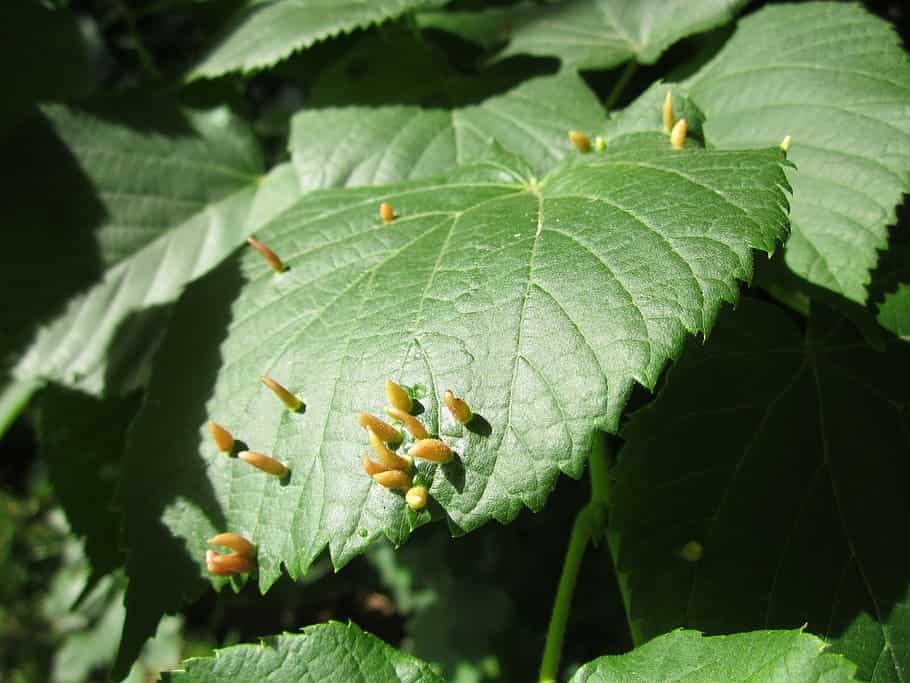Have you ever wondered what those weird outgrowths in plants are? You may have come across a fruit in a leaf, apple on an oak, or a dense cluster of twigs that look like a nest. They’re not part of the anatomy of plants, and they’re orchestrated by various types of insects, bacteria, mites, nematodes, or fungi. Beneath these strange lumps lies an entire unexplored biological world. These unusual lumps are called leaf galls.

Leaf galls are an intriguing phenomenon that can be found on a wide variety of trees, including oak trees. They can be produced by tiny insects that lay their eggs on the leaves, and the subsequent growths that form are a reaction to the insect’s saliva. They can also be formed by other creatures that irritate or stimulate the plant cells, but most commonly, it’s insects.
Galls are abnormal growths that are observed on leaves, twigs, or branches that can be plain brown or brightly colored. Remarkably, galls rarely bring any concerns for the plants’ well-being — at least for mature plants.
However, galls are similar to tumors in some regards, and they require nutrients to grow. In other words, galls take nutrients from the plant. Normally, they’re not numerous enough for this to make a serious difference. However, if a plant is very young, or if there are a lot of galls, or if they happen year after year after year, they can cause harm.
Commonly referred to as blister galls, bud galls, flower galls, oak apples, twig galls, and many more along the line. Whatever it is, one thing is common these plant tumors are caused by the atypical development of tissue caused by insects, mites, nematodes, fungi, or bacteria. In the US alone, there are 1,500-2,000 species of gall producers. The appearance of the gall can offer some indication as to who is responsible for it, but the only way to know for sure is through dissection.

Oaks and hackberries are two of the most common plants that host several species of gall producers. In a single oak tree per se, it can have dozens of galls in varying shapes and sizes all caused by different species.
Controlling leaf galls
Leaf galls are easy to spot once you know what you’re looking for. They are usually located on the leaves or stems of a tree, and they can take on a variety of shapes and sizes. Some galls are smooth and round, while others are covered in bumps or spines.
As we mentioned, galls are rarely a problem. But if you want to clear galls from your garden, there are a few things you can do:
- Prune affected branches. This will help to remove the galls and prevent the insects from laying more eggs on the same branch.
- Keep your trees healthy. Healthy trees are less susceptible to insect infestations. Make sure to water your trees regularly, fertilize them as needed, and keep an eye out for signs of stress or disease.
- Use insecticidal soap. Insecticidal soap is a natural and effective way to control leaf galls. Spray the affected leaves with a mixture of water and insecticidal soap, following the manufacturer’s instructions.
- Encourage natural predators. Natural predators such as birds and ladybugs can help to control insect populations. Create a garden environment that is friendly to these insects by planting a variety of native plants and providing nesting boxes and other habitats.
Of course, you can also use chemical insecticide, but I really don’t recommend this (or only as a last resort). If you do decide to use chemical insecticides, make sure to follow the instructions carefully and use them sparingly.
Leaf galls may look strange, but they serve an important purpose in the world of insects. Galls provide a safe place for insect larvae to develop, protected from predators and the elements. Galls also provide a source of food for the developing larvae, as they contain all of the nutrients that the larvae need to grow and develop.
Insect gall formation

Formation of galls is initiated when a female insect lays eggs in the actively growing part of a plant. When an insect lays its eggs on a leaf, it also injects a chemical into the leaf tissue. In this chemical, there are hormones or other substances that trigger the growth of a gall. These secretions then sort of take over the plants’ hormones, hijacking them to produce what are essentially new organs.
Essentially, the chemical get the plant leaf to grow differently, promoting resulting in the formation of a gall. Galls can take on a variety of shapes and sizes, and their appearance depends on the species of insect that caused them.
What happens is that plant cells rapidly divide to create this structural cave for the insects and its babies. This provides them with food and shelter and in some cases insects are able to pipe plant nutrients towards their galls leaving the plant less nourished.
Galls, wine, and cotton
There are specific cases in which galls can cause negative effects. In fact, galls on a grape variety produced by the phylloxera insect nearly wiped out wine production at the end of 19th century in France. A team of scientists from the University of Toledo studied the details of the relationship between this insect and the vine it sabotages.
Phylloxera lays an egg on the grape vine’s leaves and then starts to hijack the plant’s flower (reproductive) genes and directs it to create these structures. With this, the plant produces a carpel (central, female part of the flower) in an unusual spot. This alters the grape vines’ photosynthetic activity and drains its resources resulting in poor yields.
In a different study using cottonwood (Populus angustifolia) aphid Pemphigus betae, researchers dug deeper into phytohormonal changes during gall formation. It was revealed that poplar trees that resisted the aphids had higher levels of defense hormones whereas those susceptible trees had significantly high levels of growth hormone cytokinins. Interestingly, these hormonal changes in response to insect feeding are heritable.
Recent research showed that the insects live in and feed off of the structures they create. They alter the plant’s chemical defenses and trick it into not attacking it.
“In effect, phylloxera creates its own refrigerator on the plant that it can feed from whenever it wants,” said Paul Nabity, an expert in plant-insect ecology at UC Riverside.
In addition to feeding the insects, these structures also protect them from attack by other parasites.
Cecidology
In recent times, scientists have started to pay a bit more attention to plant galls. There’s even a field of research dedicated specifically to galls: it’s called cecidology.
Cecidology, the study of galls, is relatively an unexplored field that unfortunately, doesn’t receive that much attention. That’s also why there’s so much we don’t know about leaf galls or the creatures that produce them.
Still, some recent research is shedding light on these structures. David Stern, a group leader at the Howard Hughes Medical Institute’s Janelia Research Campus and author of research on leaf galls called them “one of the great unsolved problems in biology.
“How does an organism of one kingdom take control of the genome of an organism in another kingdom to completely reorganize its development, to produce a home for itself,” Stern puzzled.
It took years of research, but eventually, Stern and his colleagues started to figure out what genes are responsible for leaf galls and how different creatures can hijack them.
Other experts have found that some insects have found ghoulish ways to use galls. Specifically, some wasps will wait for other, herbivorous caterpillars to create galls, and then they’ll inject their own offspring into the gall.
“They lay their egg in another wasp’s gall,” Egan said of A. gallifolia, which his group first hatched in 2014. “They’re using the gall as a resource, and we’re still not certain how, but I think they’re attacking herbivorous caterpillars that are feeding on the gall tissue, and the wasp larva are eating those caterpillars after they hatch.”
Cecidology has important implications for agriculture and conservation. By studying plant galls, cecidologists can develop new strategies for controlling harmful insects and protecting valuable crops. They can also gain insights into the ways that plant communities are shaped by insect interactions, and use this knowledge to inform conservation efforts.
Overall, cecidology is a fascinating field that sheds light on the intricate and complex relationships between plants and insects.






